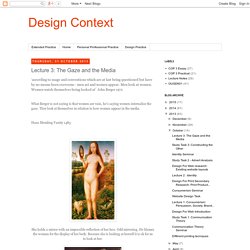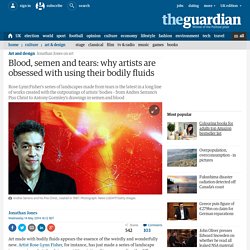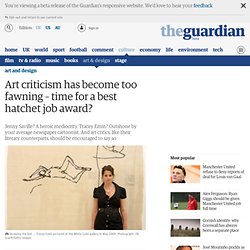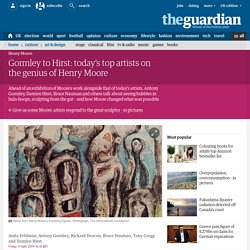

Miniroboter: Stärker als eine Ameise, geschickt wie ein Gecko - Multimedia. Vergrößern Foto: Biomimetics and Dexterous Manipulation Lab, Stanford University Von der Natur lernen.

Forscher der Stanford University (USA) haben superstarke Miniroboter entwickelt. Sie können das 2000-Fache ihres Eigengewichts ziehen. Im Vergleich: Manche Ameisenarten können das 60-fache ihres Körpergewichts bewegen. Foto: dpa Picture-Alliance / Thomas Endlein Ein anderer Miniroboter, der 9 Gramm wiegt, kann Wände hochklettern und dabei mehr als das Hundertfache seines Gewichts bewegen. Die Forscher haben sich die Technik vom Gecko abgeschaut, der auch kopfüber an Decken entlang laufen kann. Dabei helfen den Echsen die sogenannten Setae an den Füßen – Millionen von sehr dünnen, verzweigten Haaren. Einer der Stanford-Forscher sorgte bereits im vergangenen Jahr für Aufsehen, als er mit speziellen Haftplatten an Händen und Füßen eine Fassade hochkletterte. Und so funktioniert der Miniroboter: Weitere spannende Digital-Themen finden Sie hier.
From oboe to Elbow: why orchestras are changing their tune. It’s an odd sort of theatre.

The stage is full of people, men and women. They wear a sort of uniform, men one style, women another. They hold musical instruments, which they play as directed by a figure at the front of the stage. Their focus is on him – and it usually is a him – never us; we have paid to see them but they barely acknowledge our presence. The Greatest UK Garage Records You've Never Heard... By the Experts. Matthieu Martin: ceci n’est pas du street art. WebernUhrWerk 2.3 - generative music generator for MacOS X. Sónar 18.19.20 Juny 2015. Sónar 18.19.20 Juny 2015. Problem loading page. Die Wohltat der Kunst. Post/Feministische Positionen der neunziger Jahre - Sammlung Goetz. Design Context: Lecture 3: The Gaze and the Media. ‘according to usage and conventions which are at last being questioned but have by no means been overcome - men act and women appear.

Men look at women. Women watch themselves being looked at’ John Berger 1972What Berger is not saying is that women are vain, he’s saying women internalise the gaze. THE DA-ZED GUIDE TO MARINA ABRAMOVIC. As she funds her new school, here's a 26-letter guide to the heroic performance artist.

Pledge for the Marina Abramovic Institute here A is for Academy of Fine Arts Marina Abramovic is considered one of the world’s most influential living artists. THE DA-ZED GUIDE TO MARINA ABRAMOVIC. New Page 1. MARINA ABRAMOVIC: SEVEN EASY PIECES 9 - 15 November 2005 www.guggenheim.org In recreating classic performance art pieces from the 1960s and 70s, veteran body artist Marina Abramovic wanted to ask an iconoclastic question: can performance art be treated like a performing art?

Can it evolve beyond its puritanical origins in transience and unrepeatability, and become something to be reperformed and reinterpreted by others, like the script of a play or a musical score? Seven nights of performances in the dizzying Guggenheim rotunda later, the answer is an obvious ‘Yes’. Abramovic’s pristinely-produced and highly respectful reconstructions showed that performance art can share in the grandeur and canonical weight of other performing arts, and this achievement may end up being her most important legacy. Mountains and ocean and sheep, oh my!: 2011-07-10. Blood, semen and tears: why artists are obsessed with using their bodily fluids. Art made with bodily fluids appears the essence of the weirdly and wonderfully new.

Artist Rose-Lynn Fisher, for instance, has just made a series of landscape images using what she claims are 100 varieties of tears – revealing the difference between tears of sorrow and tears caused by chopping onions, and many other instances of weeping. Well, if you cry easily, you may as well get some art out it, I suppose. This tearful art joins with outpourings of piss – most famously Andres Serrano's Piss Christ – and ejaculations of semen like Vito Acconci's Seedbed (who masturbated for eight hours) in the copious archive of body fluid art.
Another artist who has used semen is Antony Gormley, while Matthew Barney extrudes all kinds of strange stuff in The Cremaster Trilogy, most of it probably synthetic but we can't be sure. Yet the power of bodily fluids is no modern discovery. Art criticism has become too fawning – time for a best hatchet job award? The Hatchet Job of the Year prize rewards brutal book reviews.

The organisers have just announced their second shortlist, including nasty reviews of authors including Salman Rushdie and AN Wilson. This innovation in literary criticism is impressive – and should be imitated by the art world. Someone out there should offer an annual prize for the most lethal review of an art exhibition, because art reviews are getting way too polite. The sad death of Robert Hughes last year robbed art criticism in the English language of a courageous voice. Hughes was eloquent, honest, and did not care what artists, dealers and curators thought of him. Gormley to Hirst: today's top artists on the genius of Henry Moore. Anita Feldman, curator In putting together a show that says something about Moore's legacy I looked less at those works he is most famous for, and instead asked what innovations he has contributed that have really made a difference to the history of sculpture and that other artists have been influenced by, or have gone on to develop.

You think of his work made for landscapes, his interest in the relationship between the body and the land and the way that the body resembles the geological formations of the earth. You also think of his 60-year exploration of internal and external space. Before Moore, especially in Britain, it is hard to think of anyone who was dealing with that kind of sculptural vocabulary, but today it has become a pivotal sculptural idea and most of the works by other artists in this show explore it in some way.
The British Avant-Garde: A Philosophical Analysis. Much of contemporary art, as many have noted, has posed a challenge to much of traditional philosophical aesthetic analysis.

British Avant-Garde art is no exception. This paper will argue that the "British Avant-Garde" art is best understood in terms of Wittgenstein’s concept of "seeing-as,"(1) and will also point out that the artists and their critics often implicitly or explicitly use Wittgenstein’s concept of seeing-as in describing their work. A recent article in Art News discusses the British Avant-Garde artists in terms of their "ruling out nothing. "(6) It discusses grass roots initiatives such as the 1988 "Freeze" show organized by Damien Hirst, and that of Simon Patterson, who warps diagrams, e.g., replacing the names of train stops on London Underground maps with those of philosophers, and others.
Surveillance art - Artist Sameh Al Tawil official website. Di-Egy Fest 0.1 Conference 2013 CR13 International Research Conference In The Series Of Consciousness Reframed: Art And Consciousness In The Post- Biological Era The influences of communication technology on the concept of privacy and it’s reflection on New Media-Art By Sameh AL Tawil, independent Media Artist and art critic, specializing in Media art.

He is a graduate of ADBK Munich, Germany, Master study in Media Art Histories in Donau university, in Krems, Austria From the aroma of time and up till now, the issue of penetrating public privacy preoccupy human in general, and the governments in particular, having the desire to know what is going on in people’s minds and controlling on the ways of transferring information that belongs to them and to the others around them. Mona Hatoum Artists. Mona Hatoum’s poetic and political oeuvre is realised in a diverse and often unconventional range of media, including installations, sculpture, video, photography and works on paper. Hatoum started her career making visceral video and performance work in the 1980s that focused with great intensity on the body. Since the beginning of the 1990s, her work moved increasingly towards large-scale installations that aim to engage the viewer in conflicting emotions of desire and revulsion, fear and fascination.
In her singular sculptures, Hatoum has transformed familiar, every-day, domestic objects such as chairs, cots and kitchen utensils into things foreign, threatening and dangerous. Even the human body is rendered strange in works such as 'Corps étranger' (1994) or ‘Deep Throat’ (1996), installations that use endoscopic journeys through the interior landscape of the artist’s own body. Does Tracey Emin’s bed still have the power to shock? Last week Tracey Emin’s My Bed, originally shown at the Tate in 1999, went back on display at Tate Britain alongside two Francis Bacon oil paintings chosen by Emin Liz Hoggard, journalist and author of Dangerous Women: The Guide to Modern Life Tracey Emin’s My Bed is the artwork that has had the most powerful effect on my life.
For women of my generation, it broke so many taboos about the body, sexuality, shame. By taking the painful detritus of our lives and placing it centre stage in an art gallery, she offered a kind of healing. The 100 greatest IDM tracks (#100-51) Skip to: #100 / #90 / #80 / #70 / #60 Nobody ever wanted to call it IDM. Braindance, electronica, bleep techno – anything was better than the US-centric (and still awkwardly disparaging) ‘intelligent dance music’, but over time the term has stuck.
We can thank early ’90s mailing list the IDM List for the awful acronym. The list was used as a platform to discuss a growing set of artists pursuing experimental forms of dance music, and became oddly popular as the music flourished in tandem with the internet itself. 20 essential records from the '70s free jazz underground. Common critical consensus has free jazz reaching the end of its ‘glory years’ in the late 1960s and early 1970s. To be sure, the genre would never again be so closely implicated with social upheaval: between the civil rights movement, black nationalism, the black arts movement, protests against the Vietnam war, and the alternately revelatory and sinister sides of the “hippie dream,” free jazz’s supposed halcyon days reflected back onto the listener the turbulent, uncertain times they were living.
For some, the deaths of two of the music’s pioneers, John Coltrane (in July 1967, of liver cancer) and Albert Ayler (in November 1970, a suspected suicide) gave pause to the music’s most elemental, fiery stage. But to say the music was over, and that the ‘70s was a largely fallow period for the music, now seems seriously misguided. Expressionismus - handgemalte Ölbild-Reproduktionen. The love & hate of portraits in Vienna 1900. Post-expressionism. Lyrical abstraction. Minimalism (visual arts) Nouveau réalisme. Monoskop. Postmodernidad. Gérard RANCINAN - Photography. Jeff Koons estrena hoy su primera obra de arte digital. Fluchy & chello comics, números 7 y 8, kalime c - Comprar Comics otras Editoriales Actuales en todocoleccion - 43320272.
Sexe i cinema d'autor: això no és porno – Cine – Time Out Barcelona. Piscinas para practicar natación en Barcelona. Make: Wearable Electronics: Design, prototype, and wear your own interactive garments: Kate Hartman: 9781449336516: Amazon.com: Books. Programming Arduino Next Steps: Going Further with Sketches (Tab) (9780071830256): Simon Monk: Books.